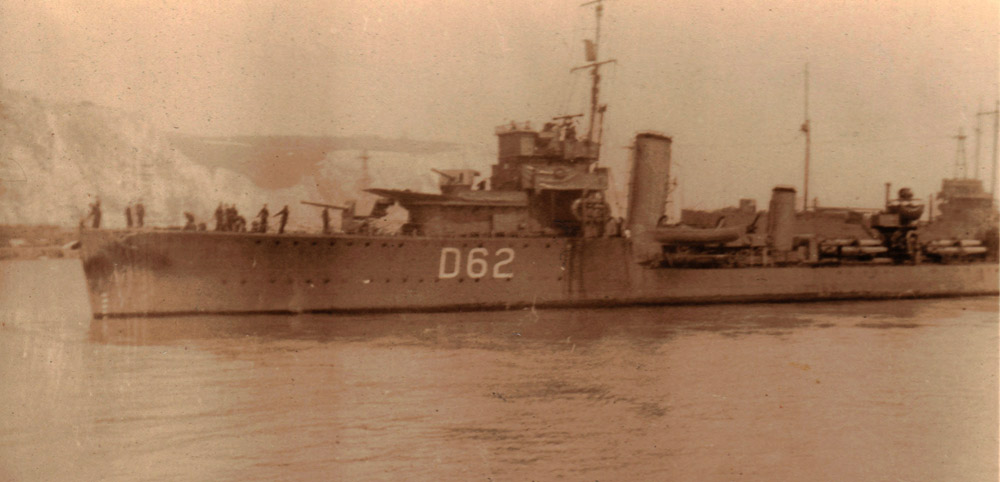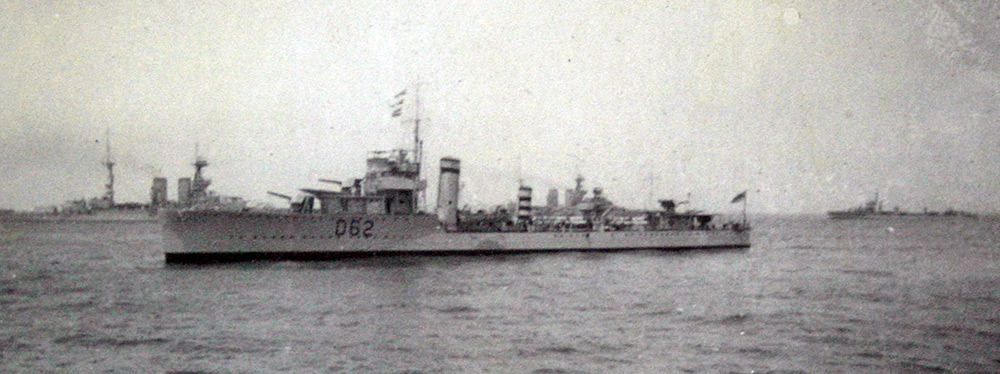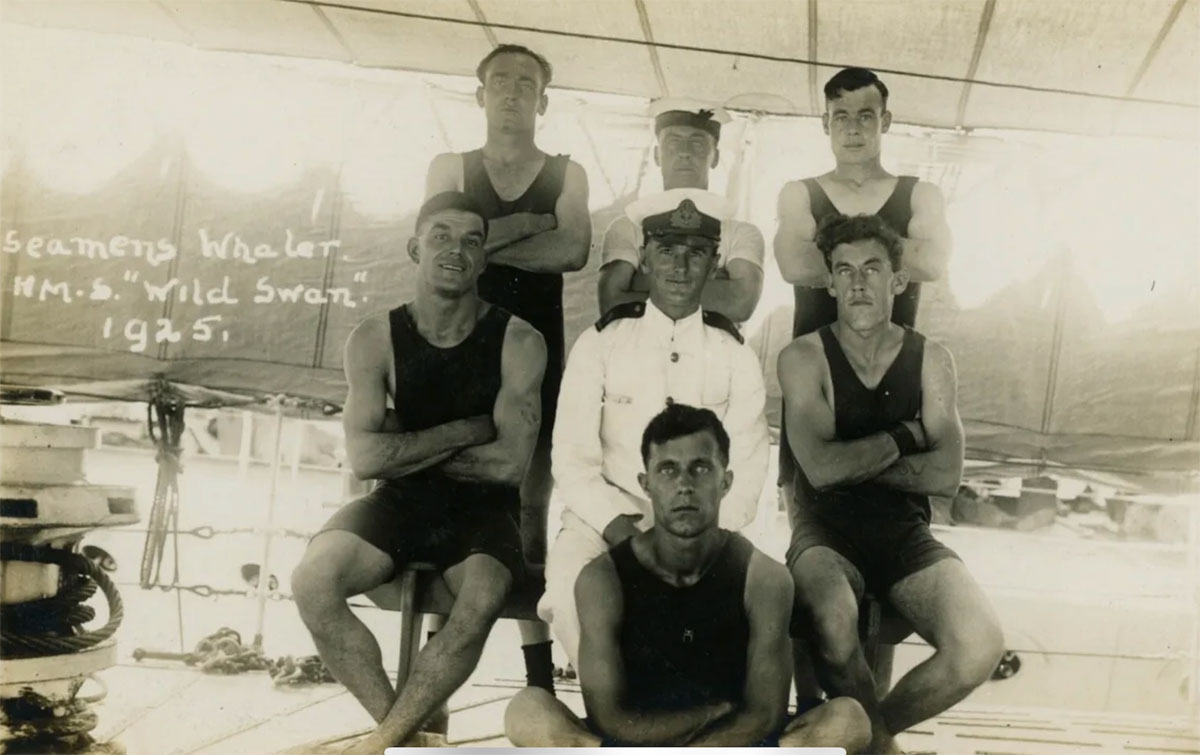Lt Cdr John L. Younghusband joined HMS
Wild Swan
as CO in July 1940 during her long refit at Chatham on coming out of
Reserve. On completion of her work-up at Portland she joined the 18th
Destroyer Flotilla as a convoy escort in Western Approaches Command at
Plymouth until the German Blitzkrieg in May when she transferred to
19DF at Dover with HMS
Verity and
Windsor.
The Netherlands was neutral during the previous war but anticipating
the invasion of the Low Countries Britain drew up plans for XD
Operations, the demolition of fuel reserves and harbour installations
in the Netherlands, Belgium and France to prevent them falling into
German hands. Fuel reserves would be destroyed by the Kent Fortress
Royal Engineers (KFRE), a Territorial Unit formed from employees of the
Blue Circle Cement Co, Gravesend, headed by a Colonel Brazier, a veteran of the
last war, and naval parties would destroy the harbour installations.
HMS
Wild Swan would take
Demolition Party B to the Hook of Holland, a ferry port on the "new
Waterway" leading to Rotterdam, the main port and commercial centre in
the Netherlands. In overall command of the KFRE "Demo" party and the
naval party was
Cdr James A. Corrie Hill who commanded
HMS Westcott on the China Station in 1938-9 but had spent the last two months in the Plans Division of the Admiralty, HMS
President.
Plans for Operation XD in the Netherland stamped "Most Secret" issued
by Vice Admiral Ramsay, Flag officer Commanding Dover, on 7 May, named
HMS
Verity
as the destroyer
to carry Cdr Hill and Demo Party X(B) plus a military Mission headed by
a Major General to the Hook of Holland. At 3.55am on Friday 10 May the
German
invaded and at 11.30 the War Cabinet meeting at 10 Downing Street
discussed the plans for XD Operations and decided that Dutch gold
at the branch of the Nederlandsche Bank in Rotteredam should be brought
back by the Demo Party. Plans changed and HMS
Wild Swan left Dover later that day with
Cdr Hill and his team of 95 men and arrived at the Hook of Holland at 5.30 pm but
without the Military Mission which followed later in HMS
Wivern. After landing he received the order to retrieve the gold from the Rotterdam branch of the National Bank.
Lt Smit in the Dutch Navy had taken command of Pilot Boat 19A that
morning and at 1930 Cdr Hill and the 95 members of the naval party and
the KFRE demolition party led by Captain Goodwin, a South
African, boarded the steamer and left immediately on the three hour
journey along the New Waterway to Lekhaven jetty in central Rotterdam.
Parachutists and gliders had landed and fighting was taking place
throughout the city. Cdr Hill and Captain Tommy Goodwin set off to
contact the authorities about their separate missions and both were
arrested as suspected Germans. Matters were made worse when Goodwin
tried to win favour by speaking in Afrikaans! In the end the
misunderstanding was resolved and after drinking toasts with their
captors Goodwin and the KFRE set off for the Shell oil plant on the
south bank of the Maas, found it deserted and patrolled by Germans and
returned to the north bank where the Dutch General refused consent for
the demolition. The KFRE unit returned to the Hook at 1800 on Saturday
11 May having achieved nothing.
Cdr Hill and his naval team headed for the Nederlandsche Bank where
fighting was taking place at the front while 11 tons of gold packed in
crates were being loaded into four trucks at the rear of the building.
Another 110 tons which had not been crated remained in the vaults. The
trucks set off to Lekerhaven at intervals, were fired on but reached
the jetty safely and the loading of 170 crates of gold bars onto the
Pilot Steamer began at 0300 on Saturday 11 May. The ship left two hours
later with Cdr Hill and Ordinary Seamen T.G. Goshawk and F.G. Higgs and
the twenty man crew. The rest of Cdr Hill's naval team returned
westward by land to their demolition positions. At 0530 on Saturday 11
May the 500 ton steel pilot boat detonated a magnetic mine dropped by a
German bomber at 2300 the previous night. The effect in the constricted
waterway was devastating. The Pilot Boat broke in two and there were
only three survivors. Cdr Hill and ODs Goshawk and Higgs are buried in
CWG at the
Emaus General Cemetery
at Vlaardingen. Most of the gold bars were retrieved by the Germans
after salvage by the Dutch but a few were never recovered. For a more
detailed account of Cdr Hill's mission and its tragic end see
Traces of War.
HMS
Wild Swan had been on
patrol to escape being bombed while berthed alongside and to leave the
quayside clear for other ships. At sunrise on Sunday 12 May
Wild Swan guided HMS
Venomous and
Verity
each bringing 200 Royal Marines to protect the perimeter of the Hook of
Holland in preparation for the arrival of a combined batallion of Welsh
and Irish Guards hastily assembled to safeguard the evacuation of
Government officials, foreign ambassadors and prominent businessmen
(Operation
Harpoon). Lt Peter Kershaw RNVR photographed the two V & W destroyers berthed alongside while they disembarked the Marines.
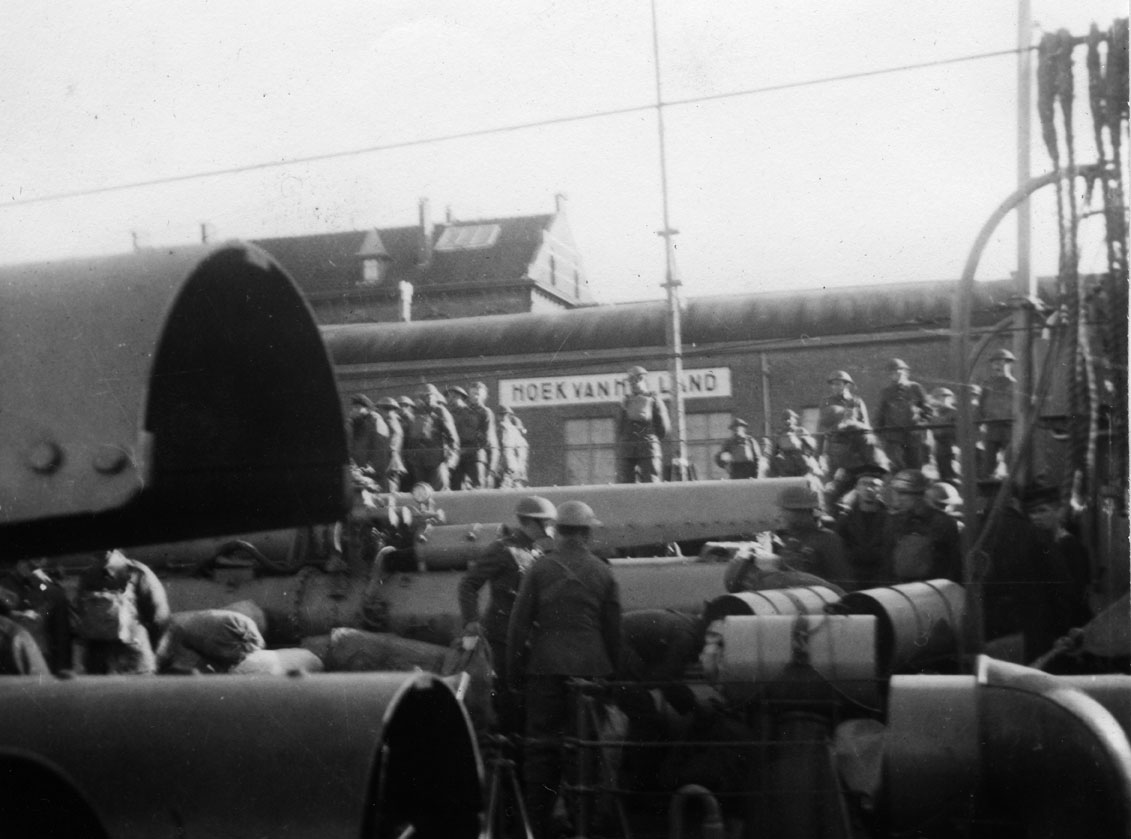 HMS Venomous berthed alongside Verity at the Hook of Holland while the Marines disembark
HMS Venomous berthed alongside Verity at the Hook of Holland while the Marines disembark
Photographed by Lt Peter Ker shaw RNVR
and
Venomous were bombed as they left the quayside at 0815 as described by AB Clapton on
Venomous in
A Hard Fought Ship:
“I remember the Venomous
landing a detachment of Royal Marines at the Hook of Holland which was
the same time as Rotterdam was being blitzed. It was during the morning
watch and a very bright sun was rising over the land. On leaving we had
the sun at our stern. We were attacked by Hanukas, which came at us out
of the sun. We had a few near misses but suffered no damage. As the
Channel was so narrow we had no room to manoeuvre, so the Captain did
the only thing open to him – he left harbour at full speed with all
guns that could be brought to bear firing in our defence.”
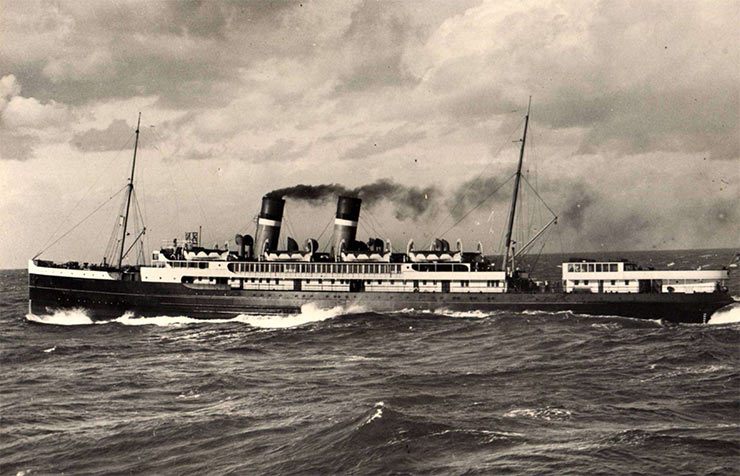
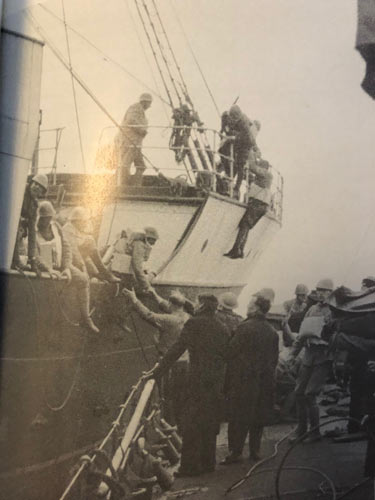 The SS Prinses Jullana a passenger ferry on the Flushing to Harwich route before the war was carrying troops when dive bombed on 12 May 1940
The SS Prinses Jullana a passenger ferry on the Flushing to Harwich route before the war was carrying troops when dive bombed on 12 May 1940
Wild Swan came alongside and transferred her troops and crew
At 1014 HMS
Wild Swan received a signal from Cdr. Hugh St. Lawrence Nicolson, RN in HMS
Hyperion
to order "Zeeland" to disembark her troops into a pilot ship to attack
German troops who had landed by plane and parachute near a wood
overlooking the Hook. Nicolson was refering to the unarmed passenger
ferry
SS Prinses Juliana
owned by the Zeeland Shipping Co which had taken aboard 200 Dutch
soldiers and their horses at Bresken on the Scheldt opposite Vlissengen
(Flushing) and was heading north to Ijmuiden. The message was
misunderstood and the troops were still aboard the SS
Prinses Juliana when Stuka dive bombers attacked from 6,000 ft at a 70 degree angle. Capt Creasey in HMS
Codrington -
"ordered Wild Swan to rescue survivors and he correctly interpreted my wishes by placing his ship's bows alongside the Juliana and taking off all the survivors left aboard, and picked up more from rafts and floats in the water. Wild Swan then proceeded to the Hook with her passengers.”
Some of the crew of
Wild Swan jumped
overboard to save the Dutch soldiers from drowning and 40 survivors
were brought safely to the Hook of Holland quay. There were also five
members of the military mission sent to Vlissingen with HMS
Wivern. Lt Goodwin of the Mission reported to Nicolson in HMS
Hyperion that secret documents were left behind in cabins 4, 5 and 6 (the SS Prinses
Juliana
was still floating at the time). It was a miracle that only one crew
member was lost, a stoker. The soldiers were brought to the
modern Fortress overlooking the Hook but were in such a state of
shock that they could not fight the German troops hiding in the wood.
HMS
Wild Swan shelled the
Germans and Dutch troops joined in from the coastal battery in the old
fortress by the New Waterway until their guns broke down.
In the meantime Capt Goodwin and his team of Sappers had finally
received clear instructions from an official in the Dutch government
for the immediate destruction of fuel stocks and returned to Rotterdam
with a Dutch officer. On arrival, a messenger gave the Dutch officer
written instructions forbidding them from doing anything! Goodwin, sick
of the constant mixed messages, struck off on his own with the sappers
carrying their explosives on stretchers, but they were bombed and spent
the night in nearby deserted buildings.
At dawn on Whit Monday morning, Goodwin received "final instructions"
to destroy the Shell and American Petroleum installations on the south
bank of the Maas and crossed the river at Vlaardingen. The Manager of
the plant protested vehemently but Goodwin wrote a signed statement in
his presence ordering him and his staff to withdraw at once as he
intended to blow up the refinery and set fire to the oil in the tank
farm. This done they returned to their lorries at Vlaardingen and were
about to leave for the Hook when they were told parachutists had
dropped along the road. They divided into two streams and proceeded on
foot across country on either side of the road and arrived at 2000 to
find the Hook a shambles from bombing and that
Wild Swan had left at 0700 for Dover with a broken propeller blade.
In their absence, the mixed batallion of Welsh and Irish Guards had been landed by the former passenger ferries SS
Canterbury and
Maid of Orleans, HMS
Hereward
had evacuated Queen Wilhelmena and the diplomatic corp, government
officials and prominent industrialists had left on destroyers. Their
job done the Guards left on destroyers. The RoP of the commanding
officers who took part in the evacuation of the Hook need to be traced
to get an accurate record of the events of these final days at the Hook
so this account will need amending but an interim description of the
evacuation can be seen on the website of HMS
Vivien.
The KFRE sappers slept under a string of wrecked railway carriages,
plundered buildings for a splendid breakfast and were making plans to
steal a small boat to escape back to England when a naval officer told
them a destroyer would arrive that afternoon to pick up stragglers.
They left that afternoon on HMS
Malcolm with another destroyer which was bombed and arrived at Dover at midnight and returned to their unit at Gravesend the next day.

 HMS WILD SWAN
HMS WILD SWAN